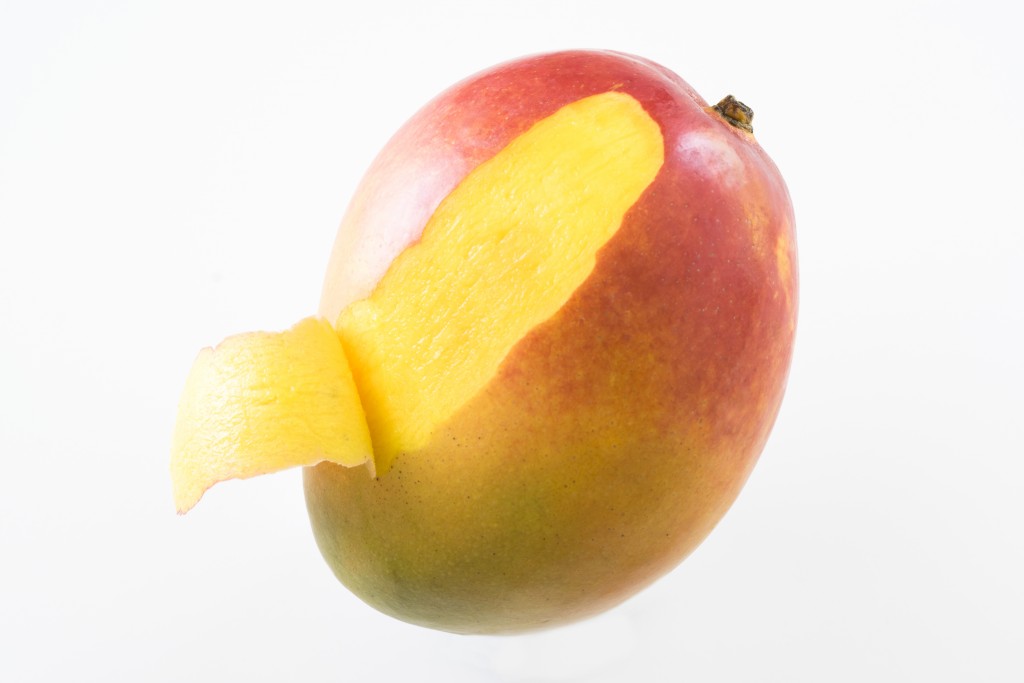Table of Contents (click to expand)
Not only is there the chance of a negative allergic reaction to the compounds in the skin, but the skin also has a slightly waxy and rubbery feel, as well as a bitter taste, which may be stronger or weaker depending on how ripe the fruit is.
When it comes to eating fruits, there is an incredibly wide variety, as they come in all shapes and sizes, textures, flavors and colors. When it comes to fruits like apples and grapes, most people know that it’s completely safe, and even additionally nutritious, to eat the skin of the fruit. On the other side of the spectrum, people know that fruits like bananas and pineapples must be peeled or separated from the skin before they can be eaten.
 In the middle of this range, however, are fruits that are slightly more difficult to classify. Very few fruit skins are inherently dangerous to eat, although their taste may not always be overly pleasant. For example, watermelon skin is packed with nutrients, but it is often too dense to chew, and is thus often thrown away. Mangoes land in the middle of this range, and there are a number of factors to consider before deciding to chomp into one of these tropical treats.
In the middle of this range, however, are fruits that are slightly more difficult to classify. Very few fruit skins are inherently dangerous to eat, although their taste may not always be overly pleasant. For example, watermelon skin is packed with nutrients, but it is often too dense to chew, and is thus often thrown away. Mangoes land in the middle of this range, and there are a number of factors to consider before deciding to chomp into one of these tropical treats.
Is Mango Skin Toxic?
While mango skin isn’t considered dangerous to eat, it does contain a very specific toxin that is rarely found in nature, called urushiol. This is the same chemical compound found in poison ivy that can cause inflammation and redness on the skin. While the amounts of urushiol in the skin of mangoes is quite small, if you are overly sensitive to this compound, it can cause inflammation and gastrointestinal discomfort.

Aside from that, however, the other active ingredients and antioxidants found in the skin, such as valuable polyphenolic compounds and carotenoids, the latter of which is partly responsible for the color of mangoes. These compounds help to reduce oxidative stress and prevent chronic disease, including cancer and heart disease.
In addition to the beneficial antioxidants in the skin, studies have also found high levels of vitamin C, vitamin E and dietary fiber. These nutrients are densely concentrated in the skin, and can aid in the maintenance of your immune system, skin health, and gastrointestinal functions.
If you have been exposed to poison ivy in the past, you will likely recall if you are overly sensitive to the compound, but regardless, the first time you consume mango skin, do so in moderation. After all, it isn’t exactly anyone’s favorite snack, as the following section will explain.
Also Read: Do The Proportions Of Nutrients Change In Fruit As It Ripens?
Is Mango Skin Good To Eat?
The question of whether or not it is safe to eat mango skin should be preceded by the real question—is eating mango skin even worth it? Not only is there the chance of a negative allergic reaction to the compounds in the skin, but the skin also has a slightly waxy and rubbery feel, as well as a bitter taste, which may be stronger or weaker depending on how ripe the fruit is. The fibrous nature of the skin also means that you’ll be chewing it for a while, as opposed to the tender, sweet and delicious flesh of the fruit.
If you are determined to get the nutrients out of your mangoes, you are welcome to try preparing them in various ways to reduce the bitterness and tough fibers. Cooking them down with other fruit into a syrup is one way to utilize the peels. Also, unripe mangoes are often eaten, peel and all, as they aren’t as tough at this point in development, and lack the bitter flavor. However, the fruit is also less pleasant to eat in this unripened stage.

Additionally, you may not want to eat mango skin unless they are organic, as this is one of the fruits that is commonly sprayed with pesticides, which may be unpleasant to consume, and potentially unhealthy. Before eating any fruit with its peel or skin, it is wise to thoroughly wash them.
Also Read: Why Do Fruits Ripen?
A Final Word
While you may dislike waste, particularly of fruit peels that are packed with potential nutrients, the negligible benefits of eating mango skin aren’t worth the downsides and risks. In other words, the juice simply isn’t worth the squeeze.
How well do you understand the article above!

References (click to expand)
- Is It OK to Eat Mango Skin? - ThoughtCo. thoughtco.com
- Mango - Fruit English - UC Postharvest Technology Center. The University of California, Davis
- Weinstein, S., Bassiri-Tehrani, S., & Cohen, D. E. (2004, March). Allergic contact dermatitis to mango flesh. International Journal of Dermatology. Wiley.
- Oka, K., Saito, F., Yasuhara, T., & Sugimoto, A. (2004, November). A study of cross-reactions between mango contact allergens and urushiol. Contact Dermatitis. Wiley.
